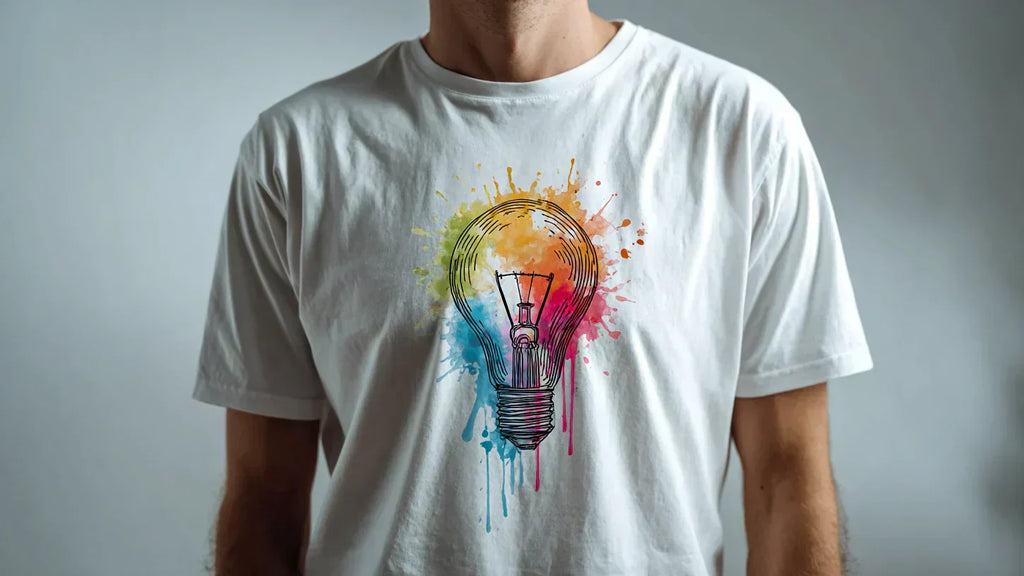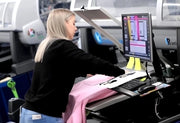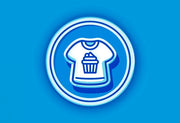🧵 From Idea to Print: What You Need to Launch Your First T-Shirt Line (2025 Edition)

🚀 A Step-by-Step Guide to Launching Your T-Shirt Line
So, you’ve got an idea for a t-shirt line. Maybe it’s a bold graphic, a cheeky slogan, or a full-blown clothing brand you’ve been sketching out in your head for years. Whatever your starting point, one thing’s for sure — launching has never been more achievable. With modern print tech, streamlined suppliers, and access to affordable t shirt printing in the UK, you don’t need huge budgets or expert design skills to get started.
This step-by-step guide walks you through the entire journey — from concept to your very first printed shirt — with expert advice and practical links to help you build a brand that lasts.
🎯 Step 1: Find Your Niche and Know Who You’re Printing For
Before you jump into colours, fonts, or product pages, you need one thing: direction.
Ask yourself: Who are you creating for? Are you launching personalised t-shirts for hen parties and events? Starting a lifestyle label built around humour, wellness, or music? Or offering bulk t-shirt printing to small businesses and local events?
The clearer your niche, the easier every decision becomes — from your pricing to your product descriptions. Your ideal customer should influence your tone of voice, garment choices, and the kind of designs you create.
🎯 Pro Tip: Don’t try to please everyone. A focused product line is more powerful than a vague one.
🖼️ Step 2: Prep Print-Ready Artwork That Actually Looks Good
This is where many startups stumble. Great designs don’t mean much if your file quality is poor.

To get crisp, professional results, we recommend using either vector files (AI, SVG, EPS) or 300 DPI PNGs with a transparent background. These formats are ideal for DTG printing — our go-to method for colourful, complex prints without minimum orders.
- At least 300 DPI at print size
- Saved in RGB colour mode
- Transparent if not printing a background
If you're unsure, our artwork guidelines provide a clear breakdown. For more detail, check Mastering the Art of Image Resolution — or hire a designer to help.
👕 Step 3: Pick the Right T-Shirts (It Matters More Than You Think)
Your design is only as good as the garment it’s printed on.
Customers don’t just judge you by the look of your shirt — they judge the feel, fit, and longevity. That’s where GSM (grams per square metre) comes in. It’s the weight of the fabric which is a solid indicator of quality.
| Garment Type | Lightweight (Casual) | Midweight (Retail) | Heavyweight (Premium) |
|---|---|---|---|
| T-Shirts / Vests | 140–160 GSM | 160–180 GSM | 180–220 GSM |
| Hoodies / Sweatshirts | 240–260 GSM | 280–300 GSM | 320+ GSM |
If you’re after premium, organic cotton blanks, check out the Stanley/Stella Creator 2.0. Want something affordable? Try Gildan or AWDis; both are solid choices with print-tested blanks.
🧵 Step 4: Choose the Right Print Method
Choosing the best print method isn’t just about cost — it’s about finish, flexibility, and what works best for your brand’s visuals. The method you pick should suit your designs, your order size, and the type of garments you're printing on.
At The T-Shirt Bakery, we generally recommend DTG (Direct-to-Garment) printing for startups — it’s high-resolution, vibrant, and perfect for small-batch orders. But there are other options worth knowing about.
-
DTG (Direct to Garment) – Best for colourful, photo-realistic designs. Perfect for t-shirts and sweatshirts. No setup fees or minimums.
-
DTF (Direct to Film) – A digital image transfer ideal for DIY home printing. Not quite as long-lasting as DTG but cheaper for full-colour prints. It can be applied with an iron, though we recommend investing in a heat press for best results.
-
Vinyl – Great for names, slogans, puff or glitter effects, and reflective elements.
Need help choosing? Browse our custom hoodies to see different print styles in action.
📦 Step 5: Choose How You’ll Print and Fulfil Orders
You’ve got your products and designs — now it’s time to choose how to get them printed and delivered.
This decision will impact your margins, speed, and the amount of inventory (if any) you manage.
Option 1: Print-On-Demand (POD)
Perfect for side hustles, artists, or brands just getting started. You don’t need to buy stock — your orders are printed and shipped as they come in. POD lets you scale without risk.
Option 2: Bulk Printing
Want lower prices per shirt and full control over your stock? Bulk printing is the answer. It’s perfect for growing brands, in-person sales, and anyone supplying local events or team kits.
Option 3: DTF at Home
A hybrid route. Buy blank garments in bulk, then order your printed DTF transfers online from our site. You can apply them at home using a heat press. Irons work too, but for reliable, long-lasting results, we recommend the press.
Need costings? Head to How to Price Custom T-Shirts for Profit.
💸 Step 6: Launch Your Storefront
Once your shirts are ready to sell, you need a place to sell them, and it doesn’t need to be complicated.
A simple online storefront is all you need to begin. You’ve got two main options:
- Marketplace: Etsy, eBay, Amazon, etc.) – These platforms bring traffic but take a commission.
- Your Own Site: Use Shopify or Wix to build a standalone brand with full control over design and SEO.
Whichever route you choose, take time to create strong product pages with:
- Short, clear titles
- Descriptions focused on fit, fabric, and story
- High-quality mockups or lifestyle photos
Not sure where to begin? Browse our custom t-shirts for men or custom t-shirts for women collections to check the layout, language, and structure.
📢 Step 7: Promote & Optimise
This is where your launch becomes a brand.
Start by building your base — talk to your audience, share behind-the-scenes stories, and build momentum around your designs. Paid ads can wait. Your focus should be on engagement, feedback, and repeat customers.
🎯 A simple way to retain buyers? Set up a loyalty program.
Give your customers a reason to come back by letting them earn points on every order, plus bonuses for sharing content, tagging your brand, or referring a friend. Our Bakery Rewards program follows this exact approach — easy to set up, loved by customers, and a natural way to boost long-term growth.
🧁 Final Thoughts
You don’t need to be perfect — you need to start.
Whether you’re selling five designs or fifty, your t-shirt brand
will evolve over time. Every order teaches you something. Every bit of feedback sharpens your vision.
So go for it. Launch your first product. Trial a home setup. Send your first batch to friends. Whether it’s a single printed tee or an entire range of customised sweatshirts, your brand begins the moment you bring your idea to life.
And when you're ready, we’re here to help. Reach out to our team or explore our full range of print-on-demand and bulk services — and let’s bring your brand to life, together.
📚 Other Related Articles You Might Find Helpful
- How to Build a Clothing Brand with No Design Experience
- Common Mistakes First-Time Designers Make
- Start a Clothing Brand in the UK
- What Are the Best UK T-Shirt Printing Techniques?
- Best T-Shirts for Startups & Indie Labels
❓ FAQs About Starting Your T-Shirt Brand
Answers to the most common questions from first-time creators — from print methods to artwork setup and promotion.











